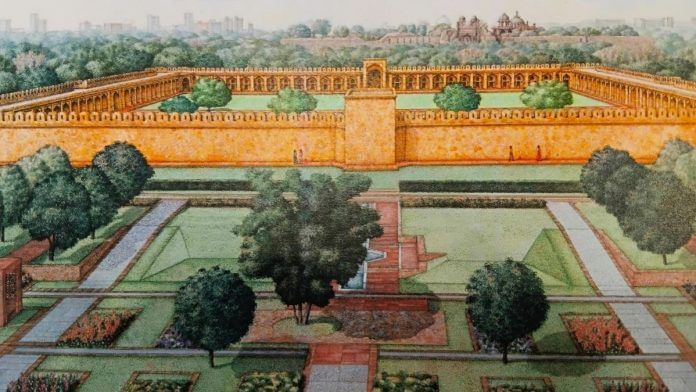New Delhi: A short wall has kept the Azimganj Serai, a 16th-century monument, just out of reach of both conservation architects and heritage enthusiasts.
It is a small but significant demarcation that blocks its natural access from the Sunder Nursery heritage complex—the serai’s fortress-like structure is within sight of the nursery’s symmetrical gardens and pruned shrubbery.
One of the earliest Mughal-era serais in Delhi, it was a welcome respite for weary travellers on the Grand Trunk Road, just as curious visitors visiting the nursery complex look at it today. The nursery receives around 10 lakh footfalls each year.
Yet plans by the Aga Khan Trust for Culture (AKTC) to complete conservation at Azimganj serai and allow public access to the monument from Sunder Nursery have been truncated since 2017. The reason—a lack of agreement between four concerned parties—the Delhi government’s Department of Archaeology, the Forest Department, the Delhi National Zoological Park and the AKTC. This, in addition to a pending permission from the Delhi zoo, which owns the land where the serai stands today. Without the permission, the AKTC does not have access to the site and can’t complete the work it commenced in 2013 to conserve the monument. Azimganj thus stands unattended for now—so near, yet so out of reach.

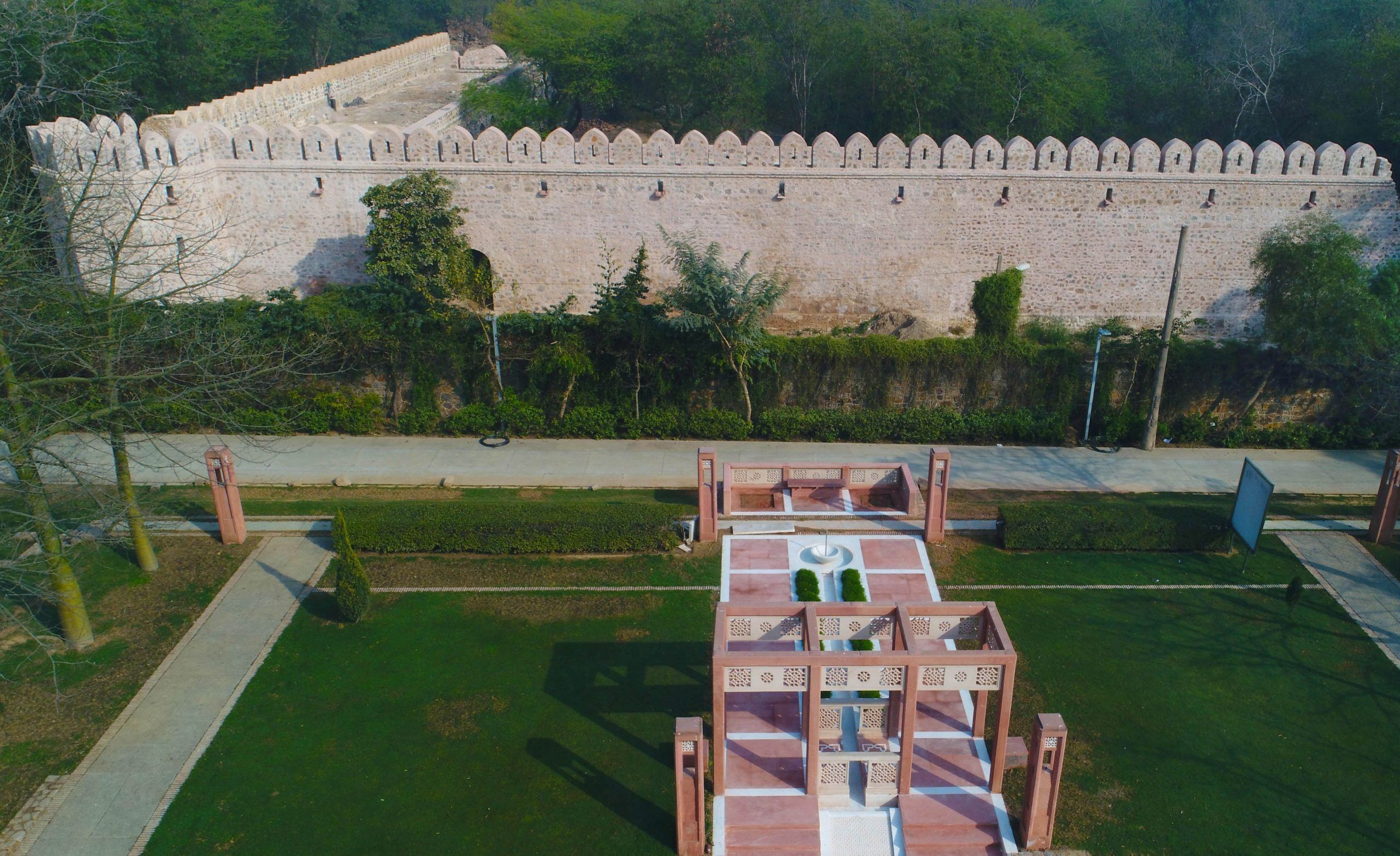
“It’s a policy issue,” said an official from the Art, Culture and Languages Department (Delhi Government) under condition of anonymity.
“The monument has to be preserved, that is our firm stand, but work can’t progress without approval or cooperation. This issue hasn’t yet been taken up by Delhi’s new government, which came to power recently. So when it does, we shall surely discuss it,” the official added.
AKTC project director Ratish Nanda is keen to resume work on the serai. For almost eight years now, the serai has been neglected as his team isn’t allowed access. At the AKTC office, half a kilometre from the Sunder Nursery, he peers over drawings of the planned conservation project.
“This is what we had actually envisioned,” Nanda told ThePrint, pointing to the project report on his desk that shows a linkage between the nursery and the serai. “This can only happen when we finish conservation work in the monument. But unfortunately, what has happened is that this wall has been erected all across the boundary.”
The last time the agency’s officials visited the monument was in 2017.
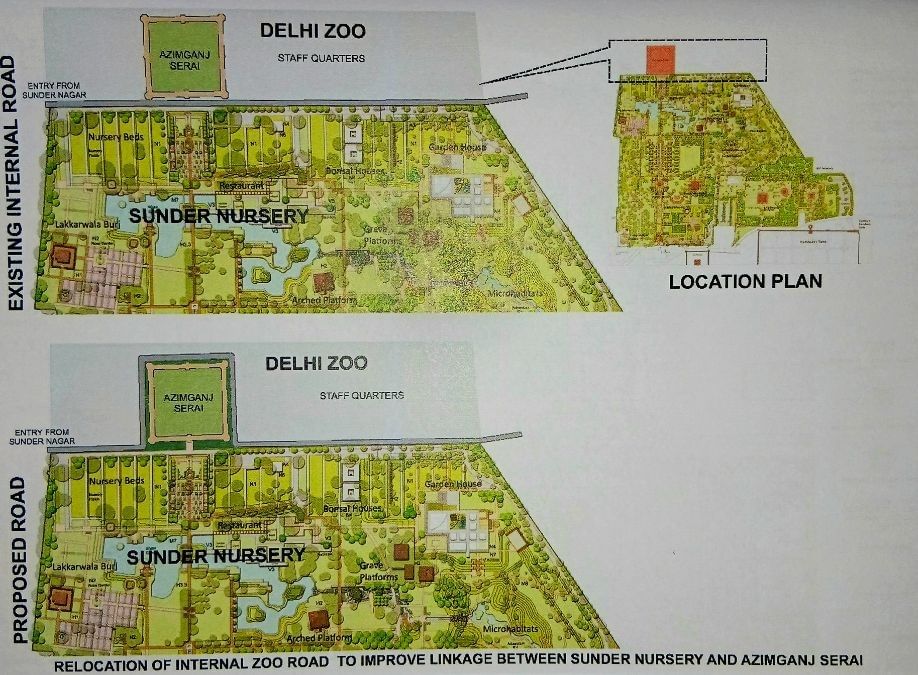
‘An unfortunate misunderstanding’
The Sunder Nursery includes six UNESCO World Heritage Sites, of which three are protected by the Archaeological Survey of India (ASI), the country’s apex body for the protection of cultural monuments.
The AKTC, which has restored a number of heritage structures in the vicinity of the serai since 2010, saw the monument’s potential as a significant heritage site. The agency proposed access to visitors from the Sunder Nursery, as the monument could be an important inclusion in the broader Humayun’s Tomb World Heritage Site boundary.
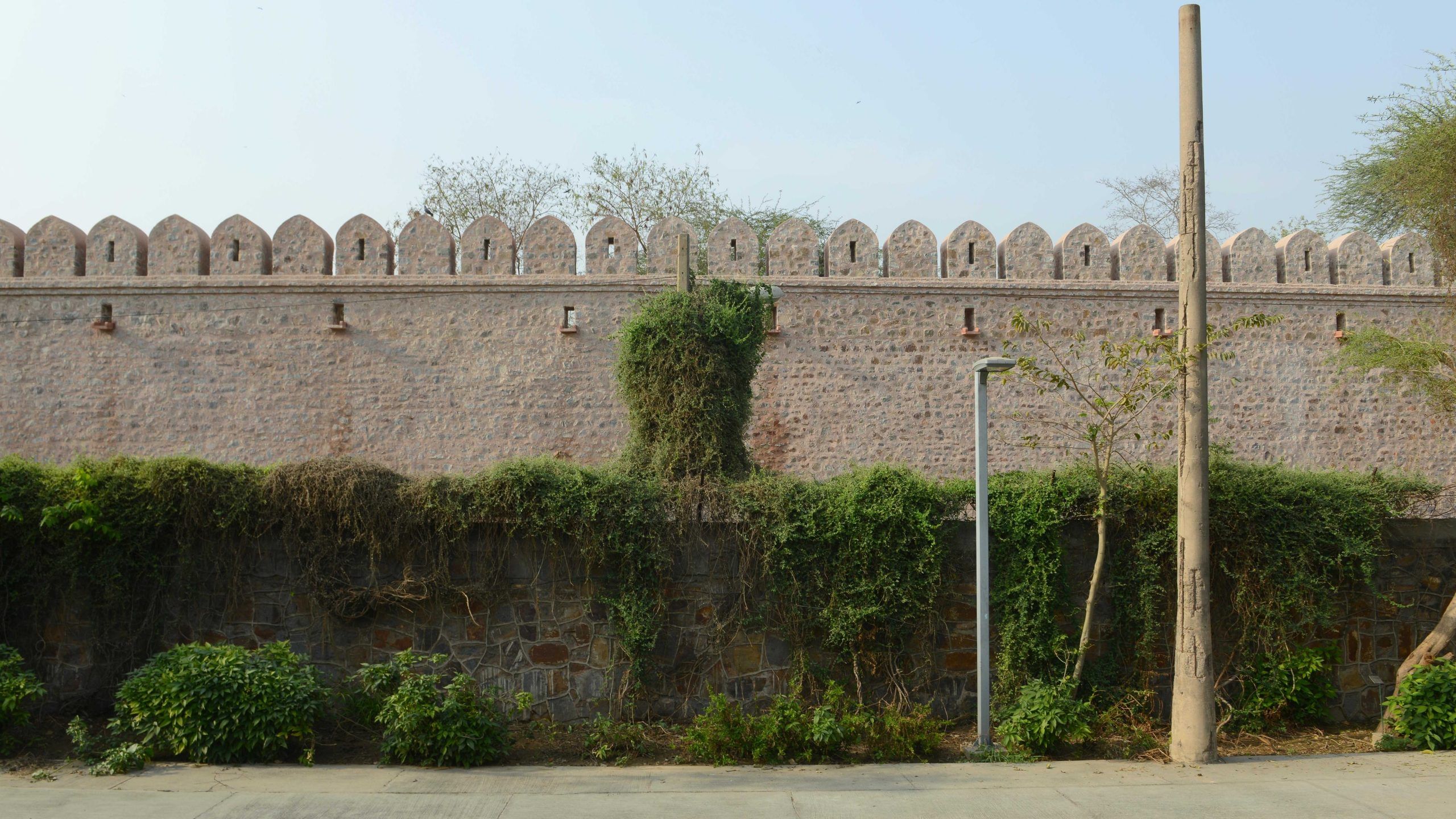

In 2013, a Memorandum of Understanding (MoU) was signed between the AKTC and the Delhi Government’s Department of Archaeology. The project was undertaken as a public-private partnership between the Archaeological Survey of India (ASI) and AKTC in collaboration with the archaeology department, which is responsible for monuments in Delhi beyond the purview of the ASI. This includes the Azimganj Serai.
Proposals and project reports were drawn up, and the work was divided into two phases: 1 and 2. While the bulk of the work in Phase 1 was carried out between 2013 and 2015, the continuation of the project with Phase 2 was subject to access given by the zoo authorities.
“The serai stands within the private area of the zoo, and there was a lot of unfortunate misunderstanding among zoo officials that staff quarters located on both sides of the serai would be disturbed by visitors to the monument. But this is something that we have already addressed,” Nanda said, referring to the proposal that has already been submitted.
The AKTC’s project report, accessed by ThePrint, shows that its solution was to put up fences between the serai and the zoo’s residential area, and to relocate the existing internal zoo road to enable access between the serai and the nursery.
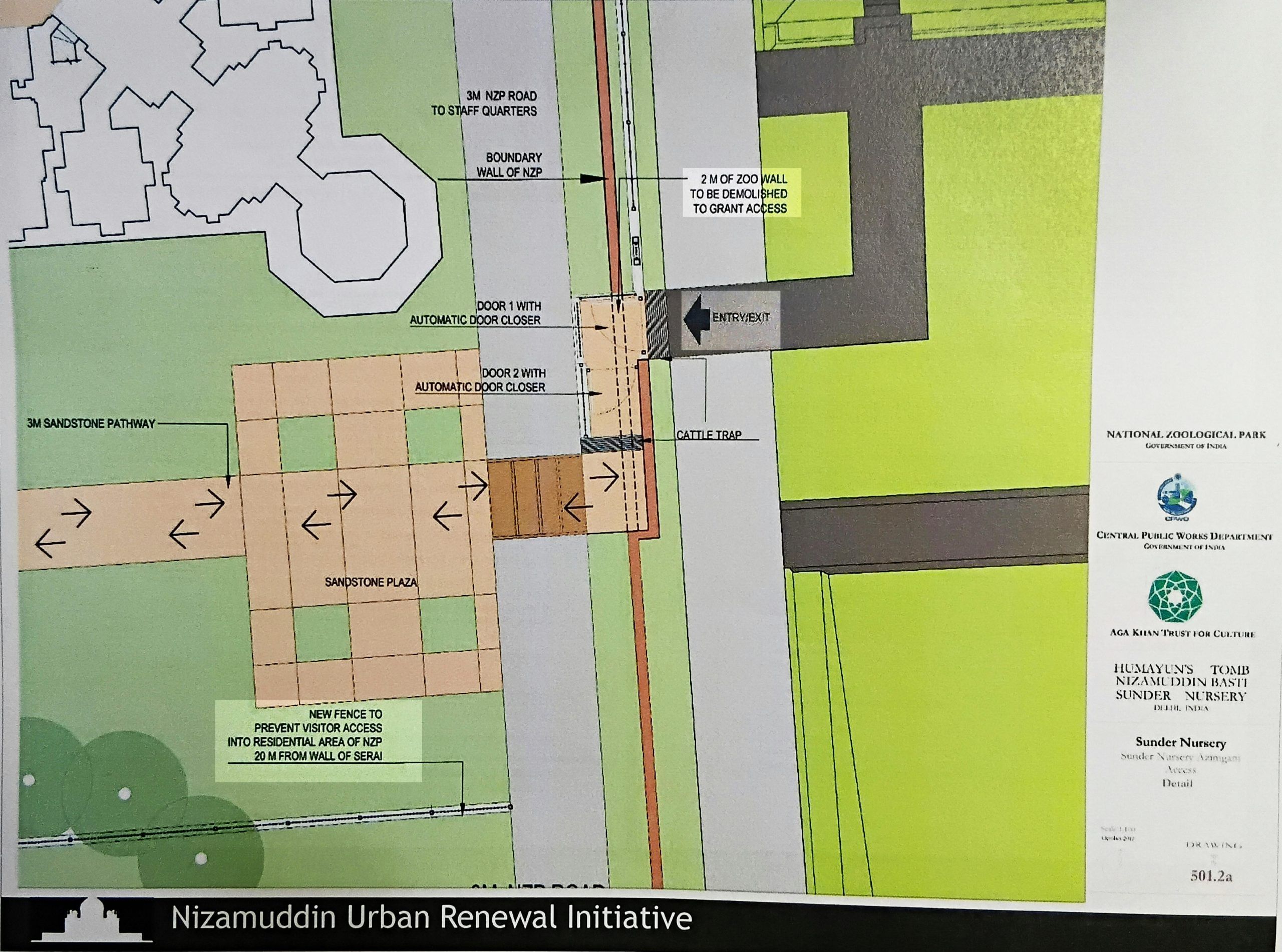
ThePrint has reached out to Delhi’s State Forest Department and State Archaeological Department, but has yet to receive an official response.
Over a WhatsApp text, the zoo authorities denied having received “any proposal in connection with the Azimganj Serai by the concerned agency”.
Also read: Industries finally returning to Bihar—There is Britannia, Zara, Van Heusen and Adani
A monument and a forest
A major roadblock is the forest department’s concern that trees within the serai would be compromised due to the conservation work on the monument. In April 2020, following an inspection of the site, the forest department declared that the serai was in a deemed forest area. In Delhi, an area with a density of 100 trees per acre is considered a deemed forest, and any non-forest activity, such as the removal of trees and construction, requires approval from the environment ministry.
According to Nanda, archaeology rules allow the removal of trees growing on the monument. Additionally, the AKTC carried out a mapping exercise of all the trees within the serai, and this shows that a large number of trees in the serai’s compound were left untouched.
“We were actually granted permissions to remove the vegetation that was growing atop the structure during Phase 1. So this was never an issue when undertaking conservation work,” Nanda said.
According to him, Phase 2 does not include elaborate reconstruction of the arches and chambers like Phase 1 did.
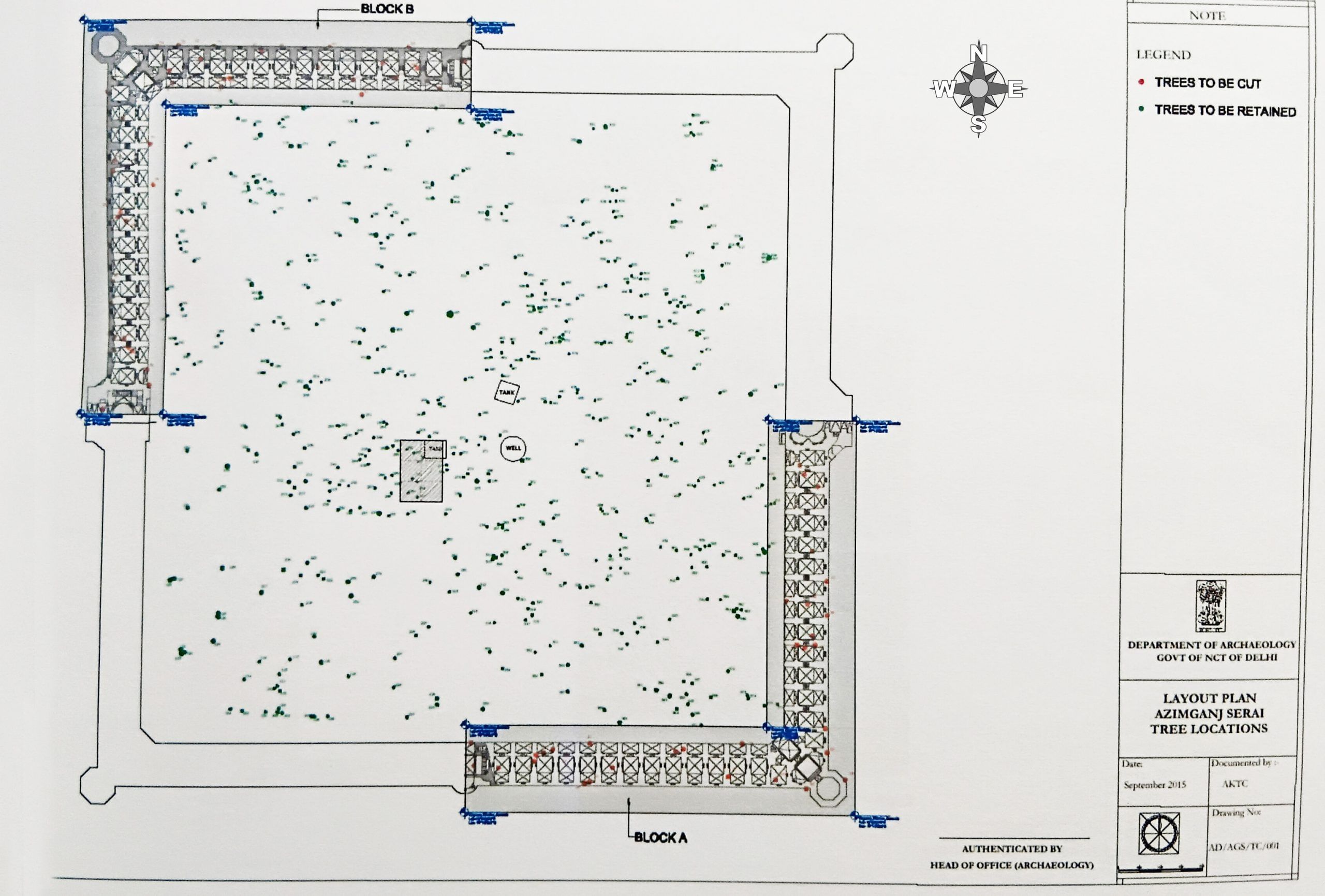
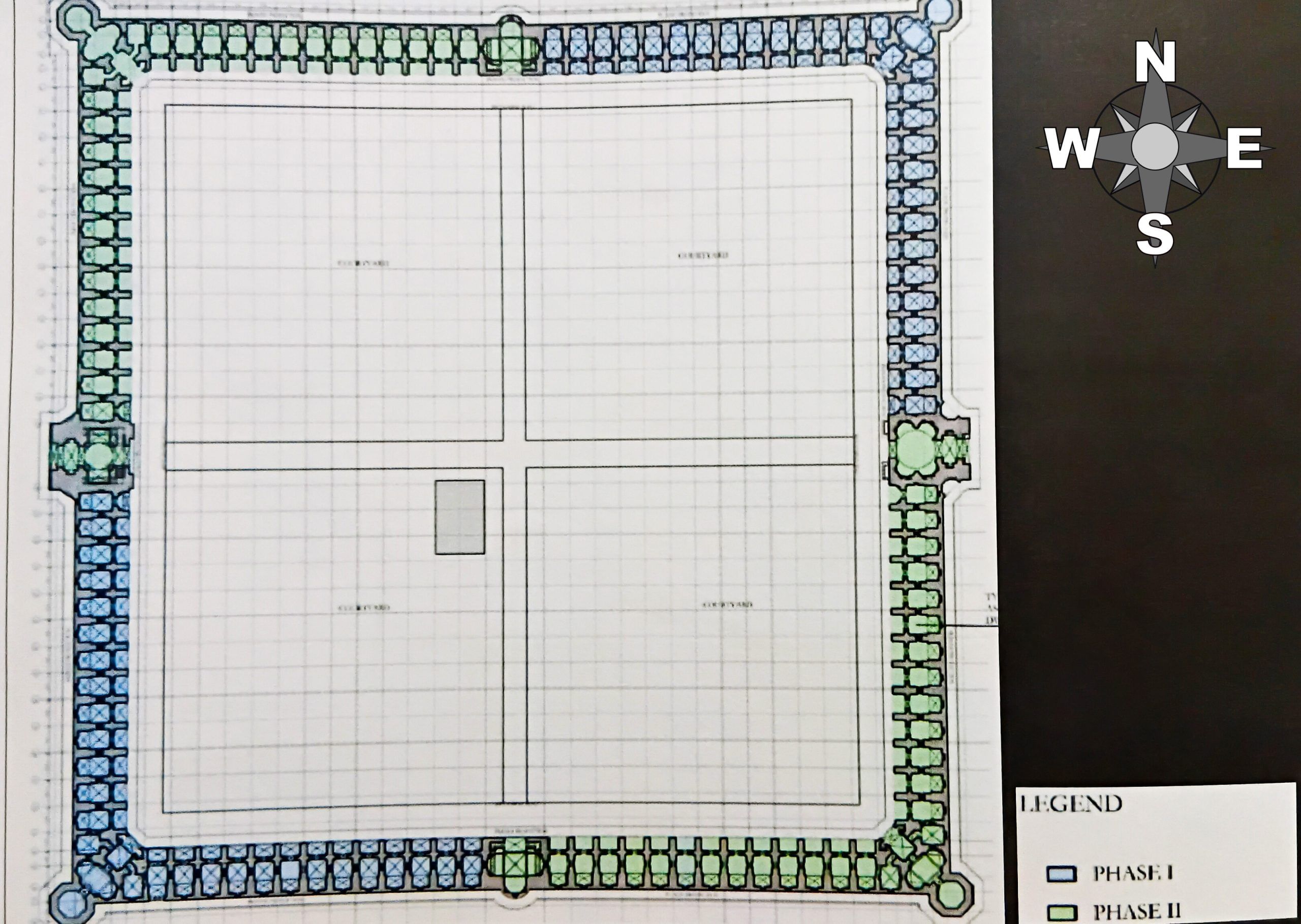
“In Phase 1, the urgency was that further collapse of the two selected L-shaped sides of the monument should not occur,” he said.
The discussions that took place on Phase 2 between the AKTC, the archaeological department, and the department of forests were only about rebuilding the exterior fort-like walls on the remaining two sides, which are the most significant architectural element of the monument.
“We mentioned categorically that no trees would be touched, yet we were still not given permission,” Nanda added.
ThePrint accessed a letter dated November 2019, directed to the Delhi zoo by the Central Zoo Authority and MoEFCC (Ministry of Environment, Forests and Climate Change). In the letter, the central body approved the integration of Azimganj Serai and access to it from Sunder Nursery.
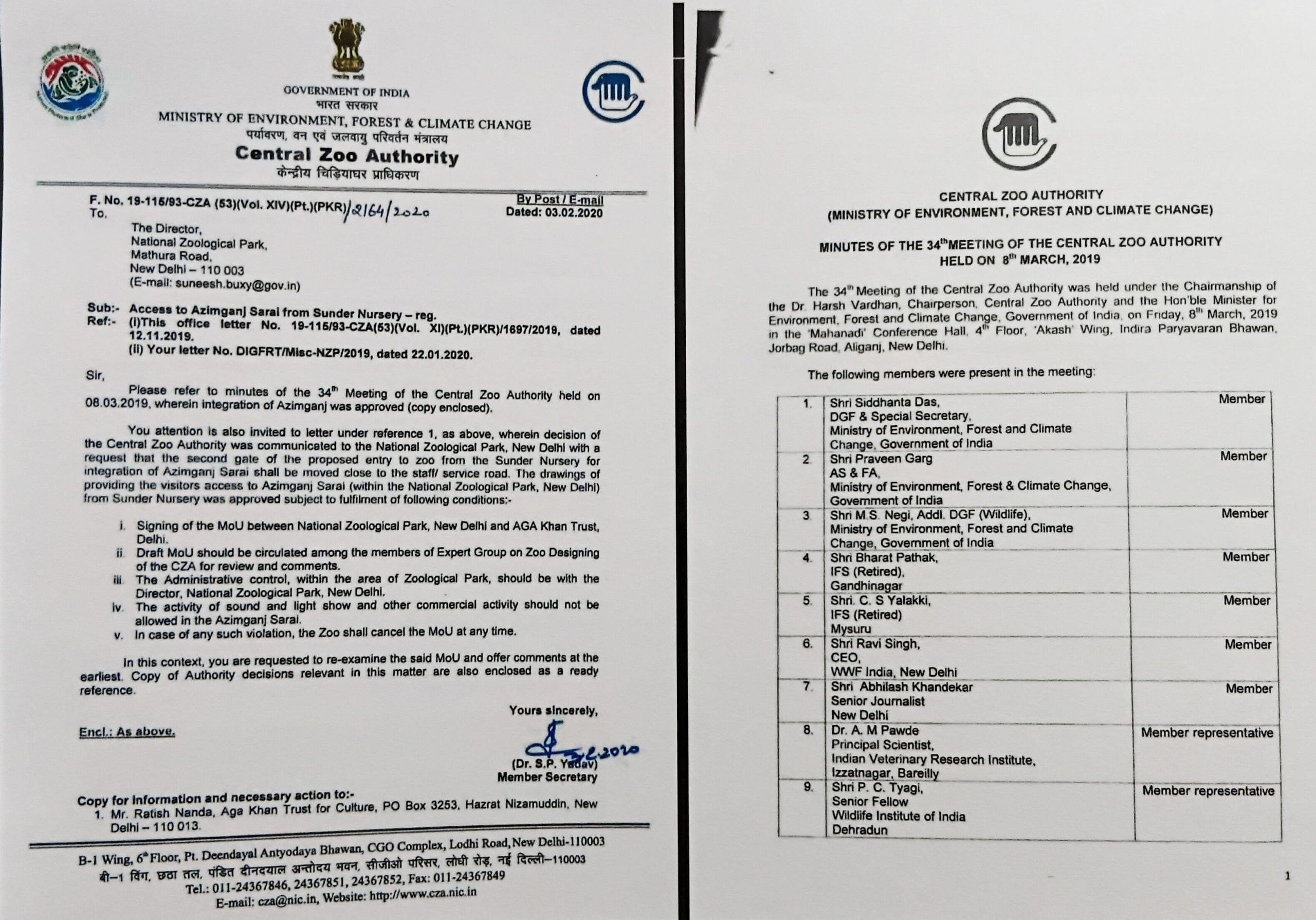
Despite this, according to Nanda, Phase 2 of the project hasn’t been implemented since the approval is pending with both the Delhi government and the zoo authorities.
Also read: Patna is now a city of museums. Making its history great again
Reversing decades of neglect
A square-shaped structure measuring around 111 x 111 metres, Azimganj Serai is at the cusp of the Sunder Nursery gardens on one side and Delhi’s National Zoological park on the other.
In 1959, when the enclosures for animals were being built in the zoo, the serai was used as a temporary holding space for animals before they were shifted to their enclosures.
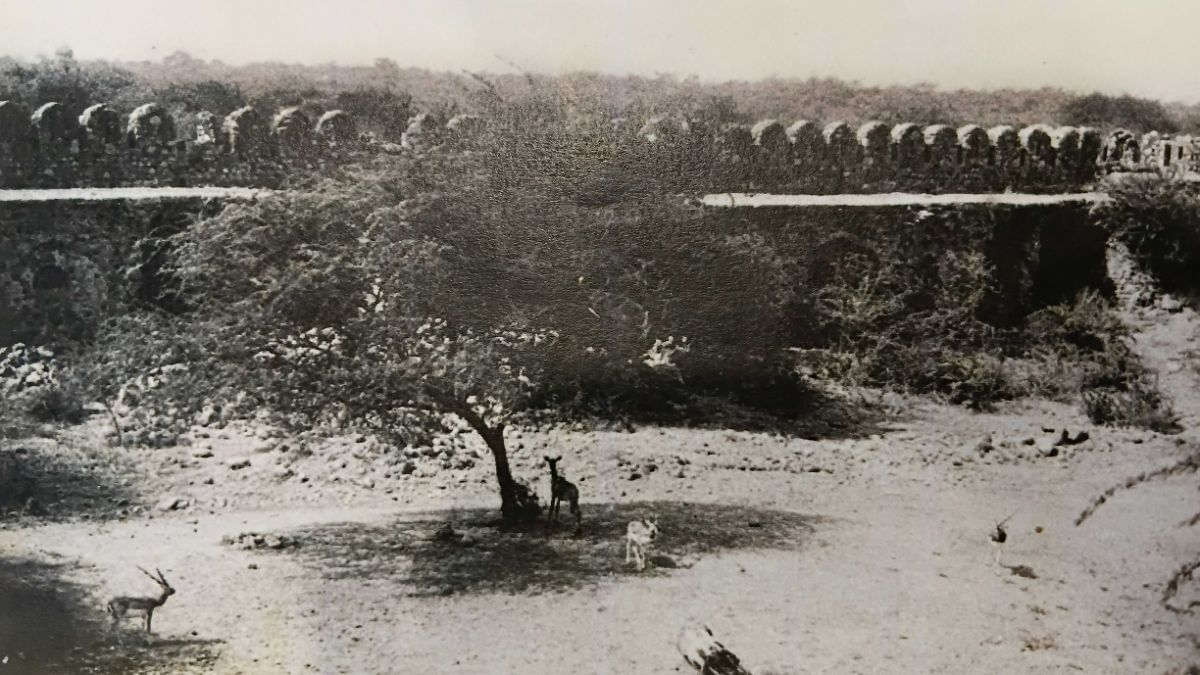
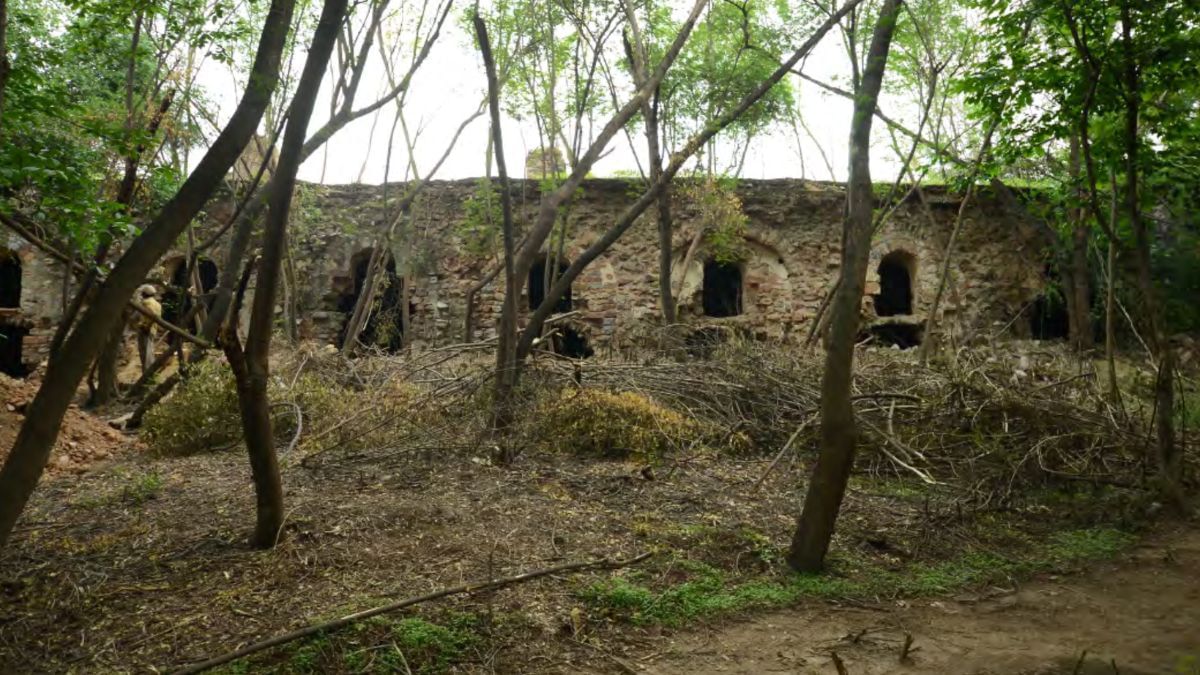
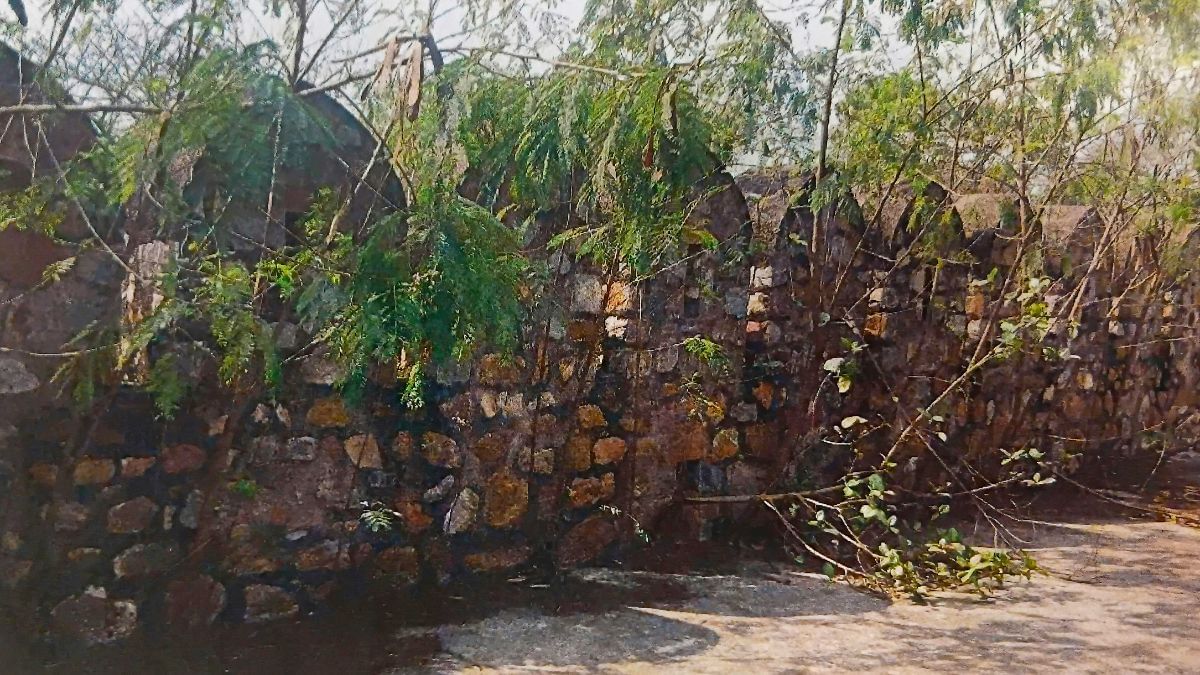
Since then, the monument has seen significant loss of architectural features, such as chambers, arches, and masonry walls, due to loss of connectivity and lack of maintenance.
When conservation began in 2013, the AKTC undertook a thorough documentation. It included scientific excavation to determine original floor levels when the monument was built, careful removal of debris, and the removal of excessive vegetation that had damaged the structural integrity of the monument. The work was carried out under the close supervision of a conservation architect and engineers, and with the approval of the state archaeology department.
Subsequently, Phase 1 commenced, which focused on lime plastering and pointing, in line with traditional techniques for building and repairing, as detailed in the project report by the AKTC. Conservation works in 2015 included the reconstruction of 27 chambers in the south-eastern corner and 28 chambers in the north-western corner of the monument.
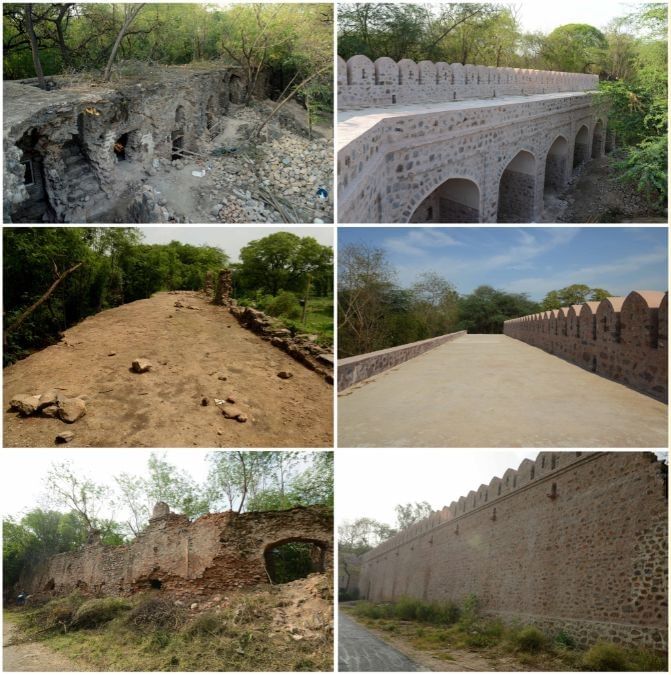
“Conservation is the mothership. It’s every action to take care of a monument. That’s what you see happening here,” Nanda said, pointing to the report on his desk.
The Ministry of Tourism, he added, has been following the principle of reusing heritage spaces, as it has done with Sunder Nursery. He remains hopeful that someone from the newly elected government of Delhi will help resolve the issue.
“The idea is adaptive reuse, whether it’s a weekly bazaar or an event space. The Aga Khan Trust for Culture remains committed to reviving our efforts to conserve Azimganj.
Shaz Syed is an alumnus of ThePrint School of Journalism and is currently interning at ThePrint.
(Edited by Prasanna Bachchhav)



